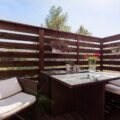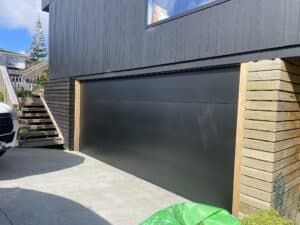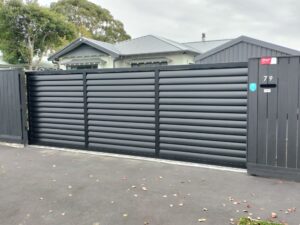When it comes to extending your growing season and providing the optimal environment for your plants, selecting the right greenhouse structure is a crucial decision. With several options available, including tunnel houses and glass houses, it’s essential to understand the features, advantages, and limitations of each.
In this guide, we’ll consider the factors that influence your choice and help you make an informed decision based on your unique needs.
- Structure and Design
When it comes to sheltering plants from the elements, both tunnel houses and greenhouses offer their own unique architectural appeal. Tunnel houses are characterized by their curved tunnel-like shape and sport aluminium frames that provide essential structural support. On the other hand, greenhouses exhibit a diverse range of designs, from classic gable structures to modern Quonset arcs, boasting frames fashioned from aluminium, galvanized steel, or even wood.
Tunnel Houses
Tunnel houses feature a curved or arched shape resembling a tunnel. These structures are built with aluminium frames, which offer durability and strength. The curved design of tunnel houses allows for optimal snow shedding and wind resistance. The aluminium frames provide excellent structural support, ensuring that the tunnel house can withstand various weather conditions.
Greenhouses
Greenhouses come in various shapes, including gable, Quonset, or gothic arch designs. The frames of greenhouses are typically made from aluminium, galvanized steel, or wood, depending on the desired aesthetics and durability. Aluminium frames are lightweight and resistant to corrosion, making them a popular choice. Galvanized steel frames offer additional strength and durability, while wooden frames provide a natural and rustic feel to the greenhouse.
- Covering Material
The protective coverings of tunnel houses and greenhouses play a crucial role in creating the ideal growing environment for plants. Tunnel houses are covered with UV-proof greenhouse film crafted from polyethylene. This film provides excellent light transmission while protecting plants from harmful UV rays. It can be single or double layered, with pockets of air between the layers enhancing insulation.
Greenhouses, on the other hand, utilize materials such as glass, polycarbonate, or shade cloth for their coverings. Glass is known for its superior light transmission properties, allowing ample sunlight to reach the plants. Polycarbonate is a popular choice due to its durability, impact resistance, and excellent insulation properties. Shade cloth is used to provide controlled shading and protect delicate plants from excessive sunlight.
- Climate Control
Maintaining the ideal climate is crucial for successful gardening in a tunnel house or greenhouse. Tunnel houses, with their film coverings, assist in temperature regulation. Proper ventilation is essential, especially on sunny days, to prevent overheating. Ventilation options include doors, windows, and vents that can be opened or closed to control airflow and maintain the optimal temperature inside the tunnel house.
Greenhouses offer more versatility when it comes to climate control. They often utilize ventilation systems, exhaust fans, and shading mechanisms to create a controlled environment. These features allow growers to regulate temperature and humidity levels, ensuring optimal conditions for plant growth.
- Crop Diversity and Space Utilization
Both tunnel houses and greenhouses provide ample space for growing a wide variety of crops. Tunnel houses are suitable for home gardens and small-scale production. They offer protection for various crops, including vegetables and flowers. With their curved design and efficient use of space, tunnel houses can accommodate multiple plant beds, allowing for efficient crop rotation and maximizing production.
Greenhouses excel in accommodating both boutique and large-scale farming. They offer flexibility and space for a diverse range of plants, including those that require meticulous care and specific growing conditions. Greenhouses provide the opportunity to grow exotic plants, delicate flowers, and high-value crops that require precise control over temperature, humidity, and light levels.
- Cost and Maintenance
Cost and maintenance are important considerations when choosing between a tunnel house and a greenhouse. Tunnel houses are generally more affordable due to their lightweight design and the use of UV-proof film coverings. However, periodic replacement of the greenhouse film is necessary to ensure optimal performance and longevity.
Greenhouses, on the other hand, require a more substantial initial investment due to the use of diverse materials such as glass or polycarbonate panels. The maintenance requirements of a greenhouse will vary depending on the chosen materials. Glass may require occasional cleaning to maintain its transparency, while polycarbonate panels offer durability and resistance to the elements.
- Aesthetics and Landscape Integration
The aesthetics of a tunnel house or greenhouse play a significant role in how well it integrates into the surrounding landscape. Tunnel houses, with their simple curved design, blend seamlessly with home gardens and backyard landscapes. They provide an unassuming beauty that complements the natural environment.
Greenhouses, particularly those adorned with glass, exhibit a striking elegance that can enhance the visual appeal of any garden. However, integrating a greenhouse into the landscape may require more thought and planning to ensure it harmonizes with the existing elements.
- Location and Positioning
The location and positioning of a tunnel house or greenhouse are crucial for its success. When selecting a location, consider factors such as sunlight exposure and wind protection.
Factors to Consider
Choose a location that receives ample sunlight throughout the day. Sunlight is essential for photosynthesis and plant growth. Avoid areas shaded by trees or buildings that may obstruct sunlight.
Sunlight Exposure
Position the tunnel house or greenhouse in a way that maximizes sunlight exposure. In the Southern Hemisphere, a north-facing orientation is ideal to capture the most sunlight. Consider the angle of the sun throughout the year and adjust the positioning accordingly.
Wind Protection
Protecting the tunnel house or greenhouse from strong winds is essential. Position it in a sheltered area or consider using windbreaks such as hedges or fences to reduce wind exposure. This will help maintain a stable growing environment and prevent damage to the structure.
- Size and Space
Determining the right size for your tunnel house or greenhouse depends on the available space and your specific needs. Consider the following factors when selecting the size:
Determining the Right Size
Assess the amount of space you have available for the tunnel house or greenhouse. Measure the dimensions of the area and consider any existing structures or obstacles that may limit the size.
Available Space
Evaluate your gardening goals and the crops you intend to grow. Determine how much space each crop requires and plan accordingly. Allow for sufficient walkways and working areas within the tunnel house or greenhouse for easy access and maintenance.
- Ventilation and Airflow
Proper ventilation and airflow are essential for maintaining a healthy growing environment inside a tunnel house or greenhouse. Adequate ventilation helps regulate temperature, prevent excessive humidity, and facilitate pollination. Consider the following factors when selecting ventilation options:
Importance of Ventilation
Ventilation prevents the buildup of excessive heat and humidity, which can lead to plant stress and disease. It also promotes air circulation, reducing the risk of fungal infections and improving overall plant health.
Ventilation Options
Choose ventilation options that suit your specific needs and the design of your tunnel house or greenhouse. Options include doors, windows, vents, and fans. Automatic ventilation systems can be installed to regulate airflow based on temperature and humidity levels.
- Additional Features and Accessories
To optimize your tunnel house or greenhouse, consider additional features and accessories that can enhance its functionality and convenience. Some popular options include shading and cooling systems, irrigation and water management systems, and heating systems for colder months.
Shading and Cooling Systems
Shading systems can be installed to protect plants from excessive sunlight during the hottest parts of the day. These systems can be manual or automated and help prevent heat stress in plants.
Irrigation and Water Management
Consider installing an irrigation system to ensure efficient water distribution and minimize water waste. Systems can range from simple drip irrigation to more advanced automated systems with timers and sensors.
Heating Systems
If you plan to use your tunnel house or greenhouse year-round or in colder regions, a heating system may be necessary. Options include electric heaters, propane heaters, or radiant heating systems. Proper insulation is also essential to retain heat.
By considering these factors and understanding the unique features of both tunnel houses and greenhouses, you can make an informed decision when choosing the perfect structure for your gardening needs.
Conclusion
Selecting the ideal gardening structure requires careful consideration of your climate, purpose, budget, and preferences. Tunnel houses and glass houses each have their unique features, benefits, and drawbacks. By analyzing your needs, evaluating your resources, and seeking expert advice, you’ll be well-equipped to make the right choice. Whether you’re a hobbyist or a commercial grower, the perfect structure awaits to nurture your plants and bring your gardening aspirations to life.











